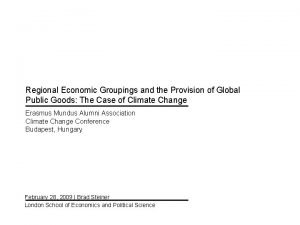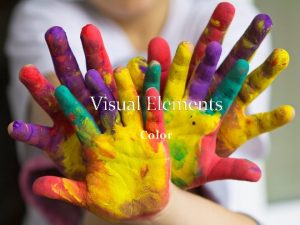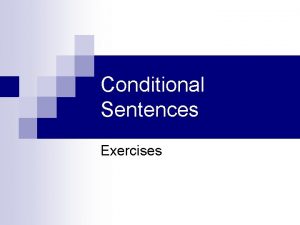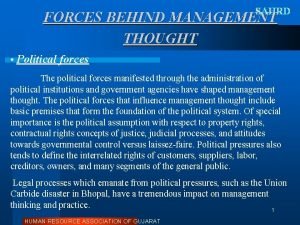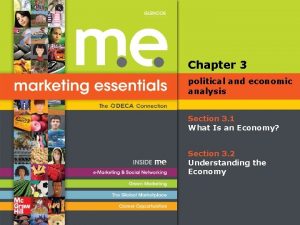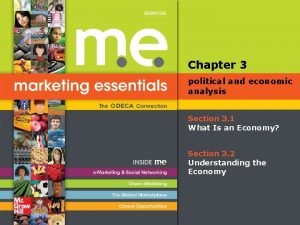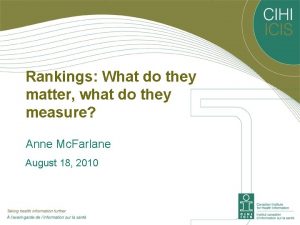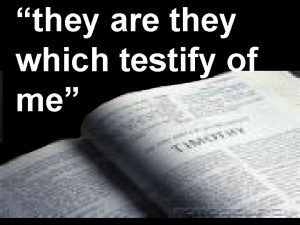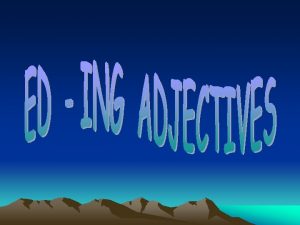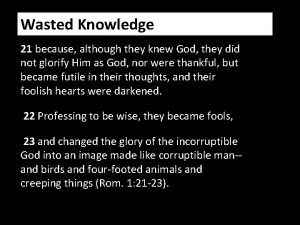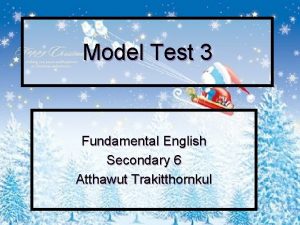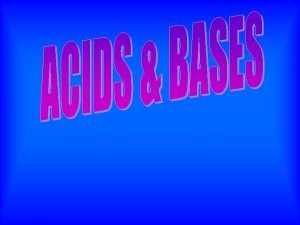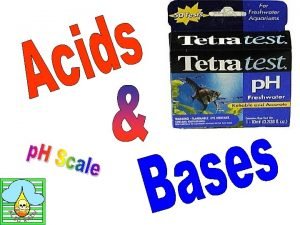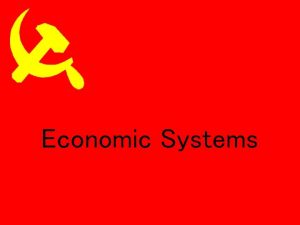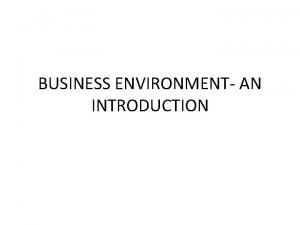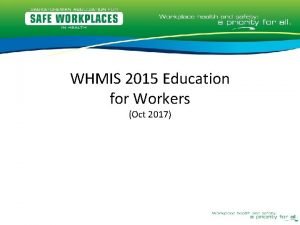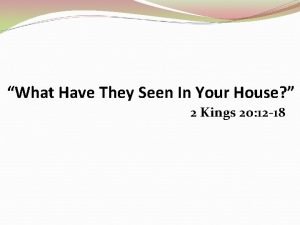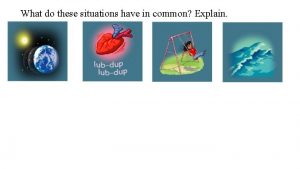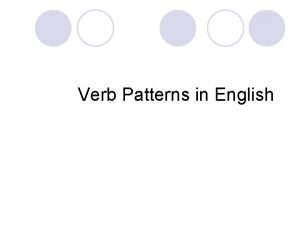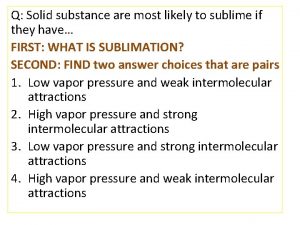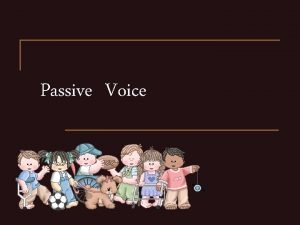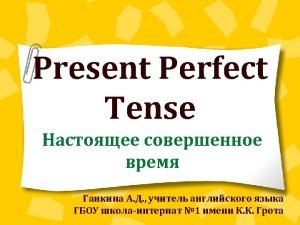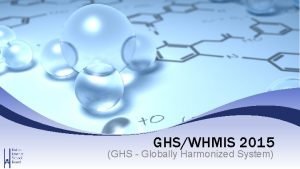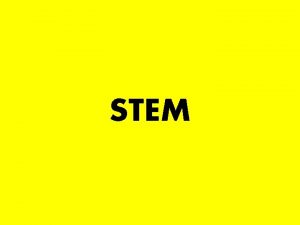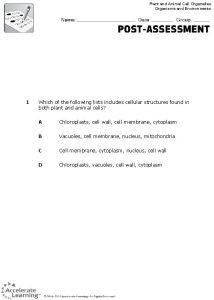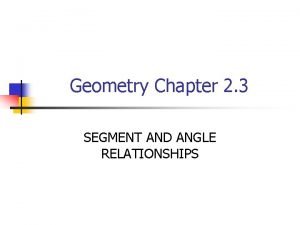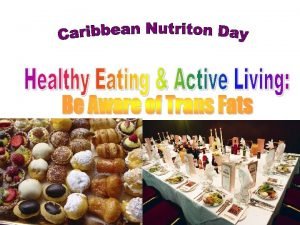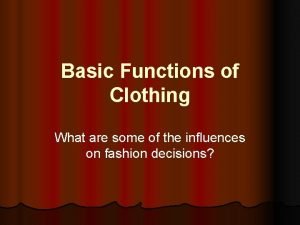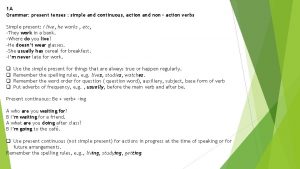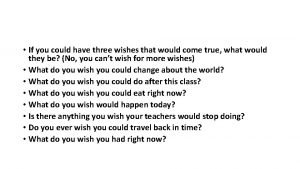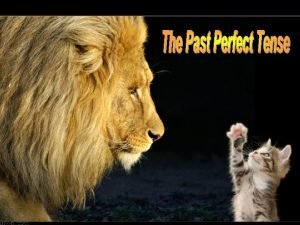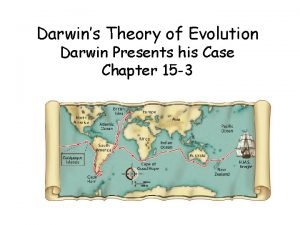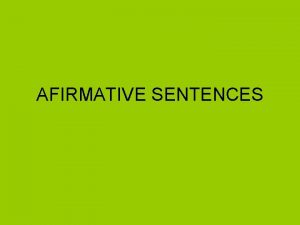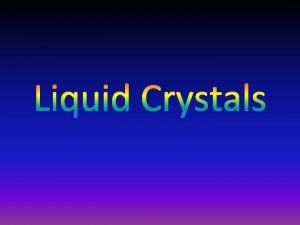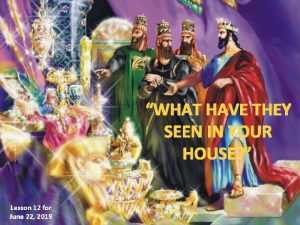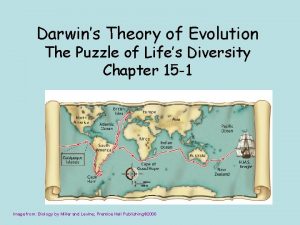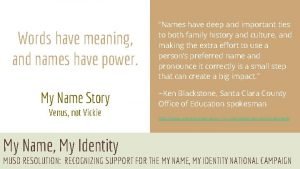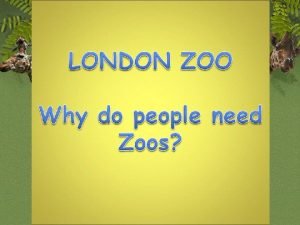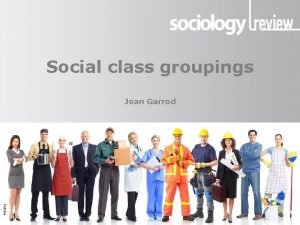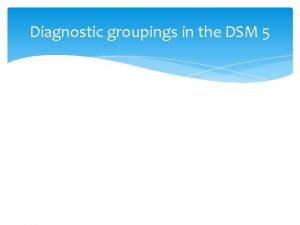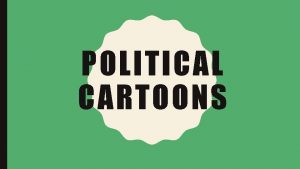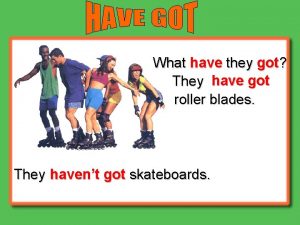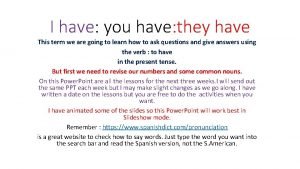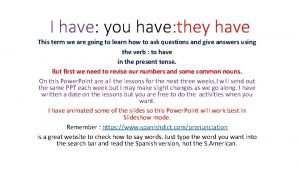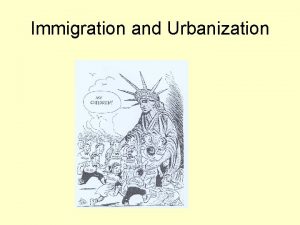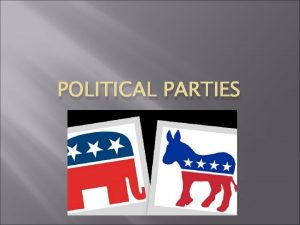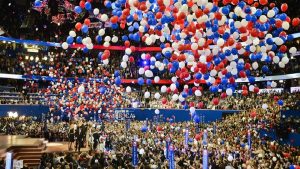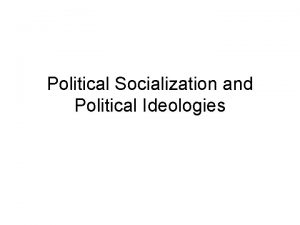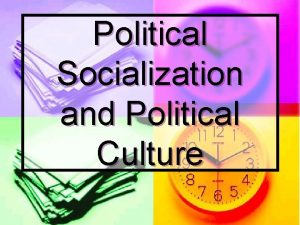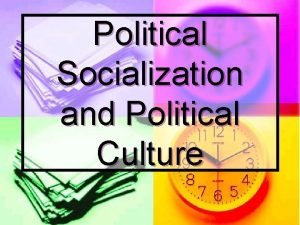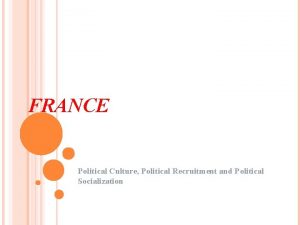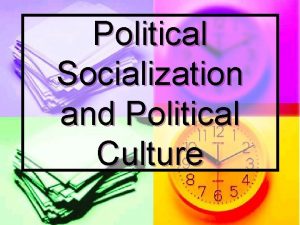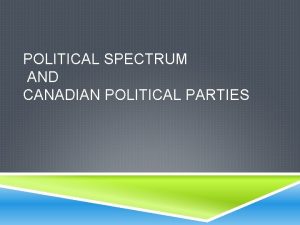Economic and Political Groupings What they have in















































- Slides: 47


Economic and Political Groupings


What they have in common Examples Acronym What they have in common Examples NAFTA Name as many LICs ASEAN Name as many MERCOSUR Name as many OPEC Name as many EU Name as many NICs NEEs OECD G 8/G 8+5 (Name all) G 20 BRICS (Name all) Global organisations HICs Political groupings Full Name HDCs Trading Blocs Economic groupings Acronym Full Name WTO World Bank IMF UN

Economic & Political groupings • • LDCs LICs NICs HICs OECD G 8 / G 8+5 G 20 BRICS • Go around the room finding out about the different economic and political groups around the world. • Fill in your table as you go or lay out your notes however you wish • For the what they have in common section – include 2 bullet points

LDCs • • Least Developed Countries (LDCs) Around 50 countries Very low incomes Poor health Low education Economic instability Heavily in debt to richer countries

NEEs • Newly Emerging Economies (NEEs) are also called ‘Emerging Markets’ • Has some characteristics of a developed market, but not all • China and India are the largest emerging markets – all of the BRICs are NEEs

LDCs • The majority of LDCs are located in the African continent, with a few located in Asia as well as Oceania, and only one in the Americas (Haiti) Use your world map to name three examples of LDCs

LICs • Low Income Countries have started to develop their economies • Increasing GDP, calorie intake per day, • Decreasing birth rates and death rates. • E. g. Egypt, Namibia The adjusted “Brandt line” which shows the rich/poor divide

NICs • Newly Industrialised Countries (NICs) • Rapidly growing economies (not LICs or HICs) • Often been a recent move from a mostly agricultural economy to one involving manufacturing and exporting • The term was originally used for the Asian ‘Tiger’ economies of Singapore, Hong Kong, South Korea and Taiwan (see table for current examples)

NICs • There’s no official list of NICs, though China, Brazil and India are currently thought of as NICs • The table presents the list of countries that are generally considered as NICs

HICs • High Income Countries have highly developed economies. • High calorie intakes and GDP. • Birth and death rates are low The adjusted “Brandt line” which shows the rich/poor divide

OECD • The Organisation for Economic Cooperation and Development (OECD) • 34 of the richest and most powerful countries, for example the USA, Sweden, and Australia • Aim to provide solutions to economic, environmental and social issues • Members of the OECD are always changing too, – e. g. Potential new members include Brazil, China, India and more recently South Africa (BRICS)

G 8 • The top eight of the OECD are called the G 8 (the “Group of 8”) – one of the world’s most powerful and wealthy groups • It’s made up of: Canada, France, Germany, Italy, Japan, Russia, USA and the UK

G 8+5 • In 2005 the G 8+5 was created to include China, India, Brazil, Mexico and South Africa • Attempt to create deeper international co-operation and an understanding of climate change and international trade

G 20 • Has 23 members, all from the developing world • Formed in 2004 • Focuses on agricultural trade Use your world map to name three members of the G 20

BRICS • The ‘BRICs’ countries are Brazil, Russia, India, China and South Africa. They are in the same group as they all have newly advanced economic development. • They are middle income countries, which are becoming high income countries.

If you finish discuss these questions: • Why do we group countries? • Do all groupings hold the same amount of power? • How and why might these groups change over time?

Inequalities in wealth and power… 1 • Most of the wealth and power is in the hands of a few countries – E. g. The G 8 have over 60% of the gross world product (the total income of the world), and control most of the military power • These groupings can also show wealth and power can change – E. g. Russia didn’t officially join the G 7 (to form the G 8) until 1997 because of the power issues of the cold war

Inequalities in wealth and power… 2 • Wealthy countries often form groups together, so they become more closely integrated • This mean’s they’re more likely to get even wealthier and develop solutions to their own economic, environmental and social problems at a faster rate • This can lead to a widening of the gap between poorer and wealthier countries

Imagine a scenario… You are all citizens of Country A You are particularly fond of eating potatoes Potatoes cost $2 each in your country A

Imagine a scenario… Country B borders your country They are more productive and efficient at growing potatoes Potatoes bought from this country cost $1 B

Where will you buy your potatoes from? ! A ? ? ? B

Imagine a scenario… Due to fewer people buying potatoes in your country, farmers are going out of business and losing their jobs What could the government of your country to do try and encourage the buying of Agrown potatoes again? A

Methods (but also barriers to trade) f arif t 2 $ $1 + $3 = • Tariffs = a tax placed on goods that are imported from other countries • Quotas = a limit placed on the number of goods that are imported from other countries • Embargo = a ban placed on certain goods imported from other countries • Subsidies = a sum of money granted by the government to help an industry or business keep the price of goods low Limi Price ted sup ply rises to $2 !. 50 l! t al a e n No A: $0 . 80 e ach!

H/W: Find examples from around the world of each of these trade barriers f arif t 2 $ $1 + $3 = • Tariffs = a tax placed on goods that are imported from other countries • Quotas = a limit placed on the number of goods that are imported from other countries • Embargo = a ban placed on certain goods imported from other countries • Subsidies = a sum of money granted by the government to help an industry or business keep the price of goods low Limi Price ted sup ply rises to $2 !. 50 l! t al a e n No A: $0 . 80 e ach!

These are all known as barriers to trade as they discourage trade between countries and encourage protectionism (the method of protecting a country’s domestic industries from foreign competition).

Trading blocs • • • NAFTA EU ASEAN Mercosur OPEC Trading blocs are countries which group together to improve their economic interests and trading patterns.

Trading blocs – p 77 text book

Advantages of trading blocs “Economies of scale” • Advantages of a larger size, including: – Larger market (population) to sell goods to – Higher population = more sales – More sales = More products made – Raw materials can be bought “in bulk”, saving money “Comparative advantage” • Easier to trade different goods and services due to fewer restrictions • So can concentrate on making what they’re good at making, and trade for the things they’re not good at! • Production will be more efficient, increasing trade overall

NAFTA • North American Free Trade Agreement • USA, Mexico, Canada • Population = 472 m • Combined GDP (PPP) = $20. 2 tn • We will return to NAFTA as a case study a bit later…

ASEAN • Association of South East Asian Nations • 10 countries, formed in 1967 • Combined population of 625 million • Combined GDP (PPP) = $3. 6 tn • Seventh largest economy in the world

ASEAN

MERCOSUR • • Mercosur = “Southern Common Market” Six full members Population = 289 m GDP(PPP) = $4 tn

OPEC • The Organisation of Petroleum Exporting Countries (OPEC) is a group of 12 major oilproducing countries • African OPECs: Algeria, Angola, Libya, Nigeria • South American OPECs: Ecuador, Venezuela • Middle East OPECs: Iran, Iraq, Kuwait, Qatar, Saudi Arabia, United Arab Emirates (UAE)

OPEC

OPEC • Half of OPECs are from the Middle East due to the vast oil reserves present there • OPEC countries control around 2/3 of global oil reserves • A large group in control of a large amount of oil, they can make sure they get a fair price from oil-consuming countries

EU • • • Population = 508 million GDP (PPP) = $19 tn Free trade zone Common currency (Euro) Free migration across borders Judicial system Parliament Humans Rights Act Health and Safety Legislation Cultural links


Let’s get nerdy (again) • You. Tube channel = CGP Grey • https: //www. youtube. com/watch? v=O 37 y. JBF Rrfg • 5 mins

Global organisations • WTO • IMF • World Bank

Global organisations • WTO = World Trade Organisation – Aims for free trade between all members – Tries to do this by removing barriers to trade – 161 members

Global organisations • IMF = International Monetary Fund – Aims: to promote international economic cooperation, trade, and employment. – 188 members pay money into it which is used to give loans to member nations for infrastructure projects / financial help (Greece) – Currently holds approximately $755 bn

Global organisations • World Bank – Two aims: • End extreme poverty by decreasing the percentage of people living on less than $1. 25 a day • Promote shared prosperity by fostering the income growth of the bottom 40% for every country – Provide low-interest loans to developing countries, works closely with the UN – Raises money by selling World Bank bonds to investors on the financial market

Case study: NAFTA • Read the Geo. File – highlight and annotate • Produce a case study fact file on NAFTA: – Key facts, figures, dates, places – Aims / why it exists – Impacts on each of the member countries

Hw • Name two global organisations. (2) • Explain two ways global organisation can help LICs. (4) • Describe how one named global institution helps to make countries more globalised and creates a global economy. (6)

Homework • Conduct independent research into the OECD • Create a fact-file (one/two pages A 4) on the OECD including key facts and figures, aims, members, at least one scheme they’ve been involved in in detail • Read pages 72 -75 of text book to consolidate learning from lessons this week.
 Solidarity meaning
Solidarity meaning Visual elements - light and color
Visual elements - light and color 1. complete the sentences
1. complete the sentences Puritans england
Puritans england Economic forces behind management thought
Economic forces behind management thought Chapter 3 political and economic analysis
Chapter 3 political and economic analysis Chapter 3 political and economic analysis
Chapter 3 political and economic analysis Economic growth vs economic development
Economic growth vs economic development Rectangular prism vertex
Rectangular prism vertex Pest political economic social technological
Pest political economic social technological Economic growth vs economic development
Economic growth vs economic development Economic systems lesson 2 our economic choices
Economic systems lesson 2 our economic choices Rankings: what are they and do they matter?
Rankings: what are they and do they matter? They seek him here they seek him there
They seek him here they seek him there They have not rejected you but me
They have not rejected you but me They are they which testify of me
They are they which testify of me Grammar rules frustrate me they're not logical they are so
Grammar rules frustrate me they're not logical they are so For they not know what they do
For they not know what they do Knowledge not shared is wasted
Knowledge not shared is wasted Political demonstrations on american campuses have abated
Political demonstrations on american campuses have abated Acids have a taste and they turn litmus to
Acids have a taste and they turn litmus to Acids have a taste and they turn litmus to
Acids have a taste and they turn litmus to Why do we have economic systems
Why do we have economic systems Business environment introduction
Business environment introduction Drag the example to connect with the description given
Drag the example to connect with the description given What have they seen in your house
What have they seen in your house What do you do have in common explain
What do you do have in common explain Verb pattern
Verb pattern Solid substances are most likely to sublime
Solid substances are most likely to sublime Active voice
Active voice Everyone has to answer for his actions
Everyone has to answer for his actions Pictograms can be easily identified because they have a
Pictograms can be easily identified because they have a Flexible stem
Flexible stem Animal cells
Animal cells Definition of segment bisector in geometry
Definition of segment bisector in geometry They have oil
They have oil Clothes have many basic functions. they protect us from
Clothes have many basic functions. they protect us from They have always breakfast in bed
They have always breakfast in bed My 3 wishes
My 3 wishes He was
He was Whales have vestigial legs. this suggests they _____.
Whales have vestigial legs. this suggests they _____. Don't drink and drive she warned us
Don't drink and drive she warned us They have carried out
They have carried out What have they seen in your house
What have they seen in your house I am not short form
I am not short form Whales have vestigial legs. this suggests they _____.
Whales have vestigial legs. this suggests they _____. Words have meaning and names have power
Words have meaning and names have power I have four legs and a tail i have no teeth
I have four legs and a tail i have no teeth
